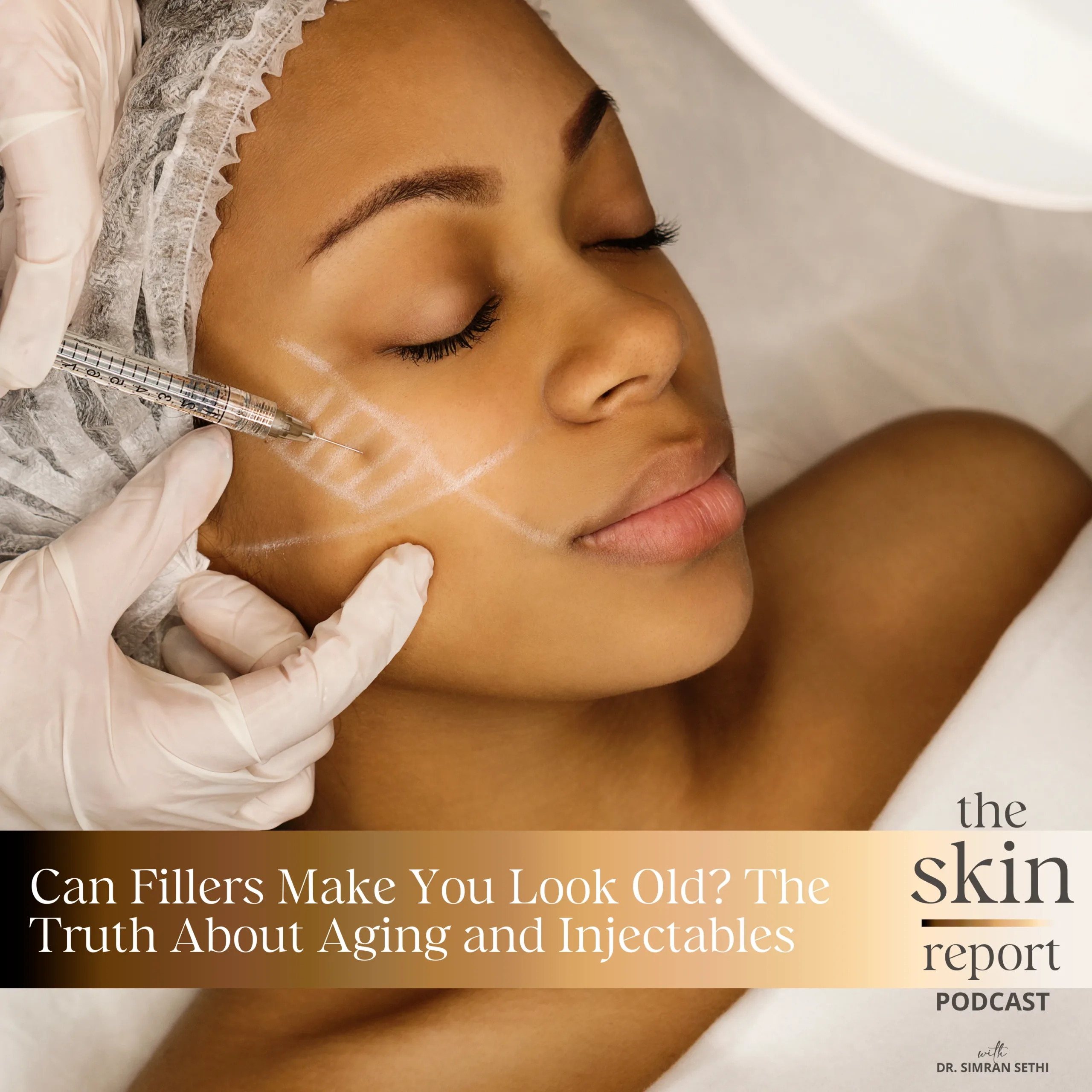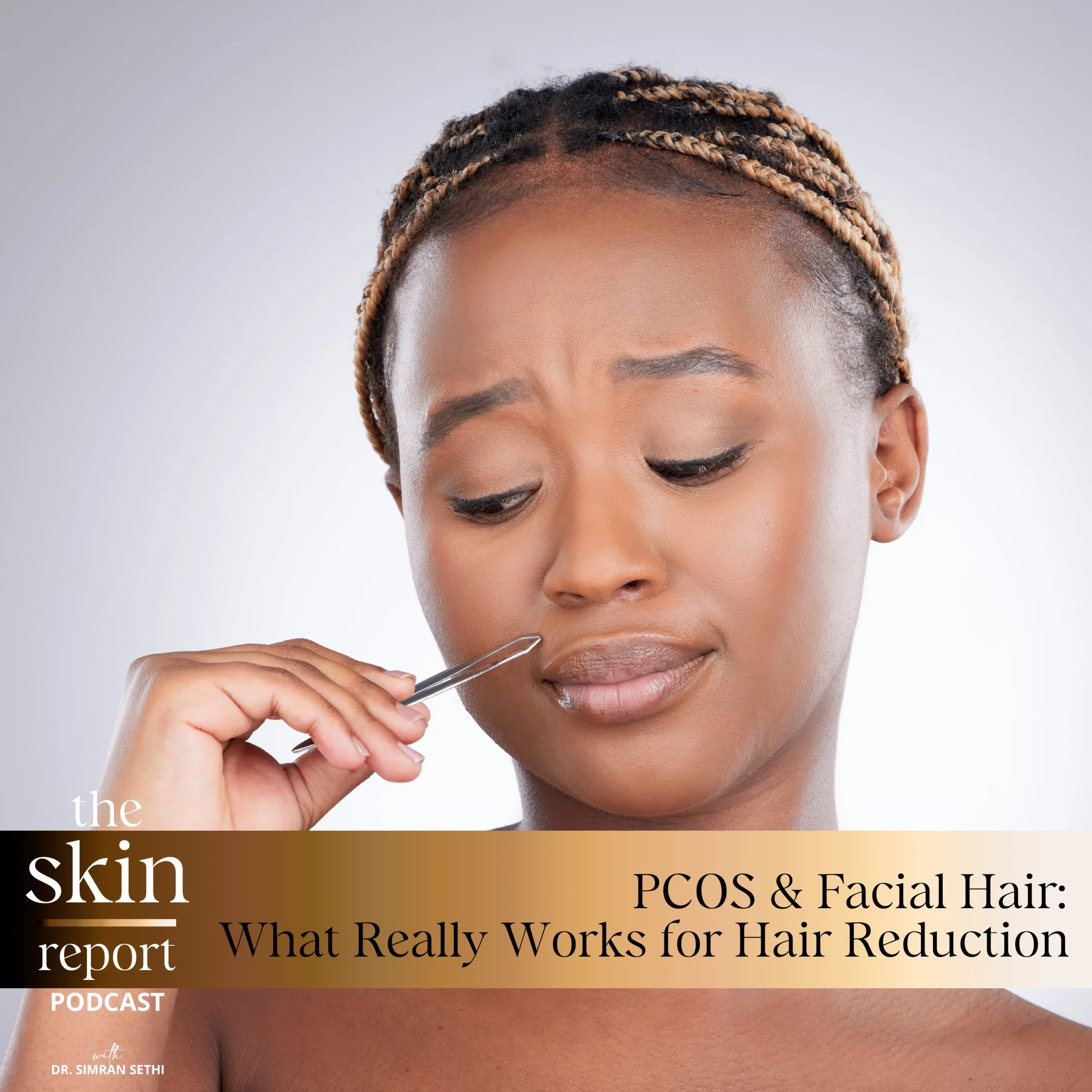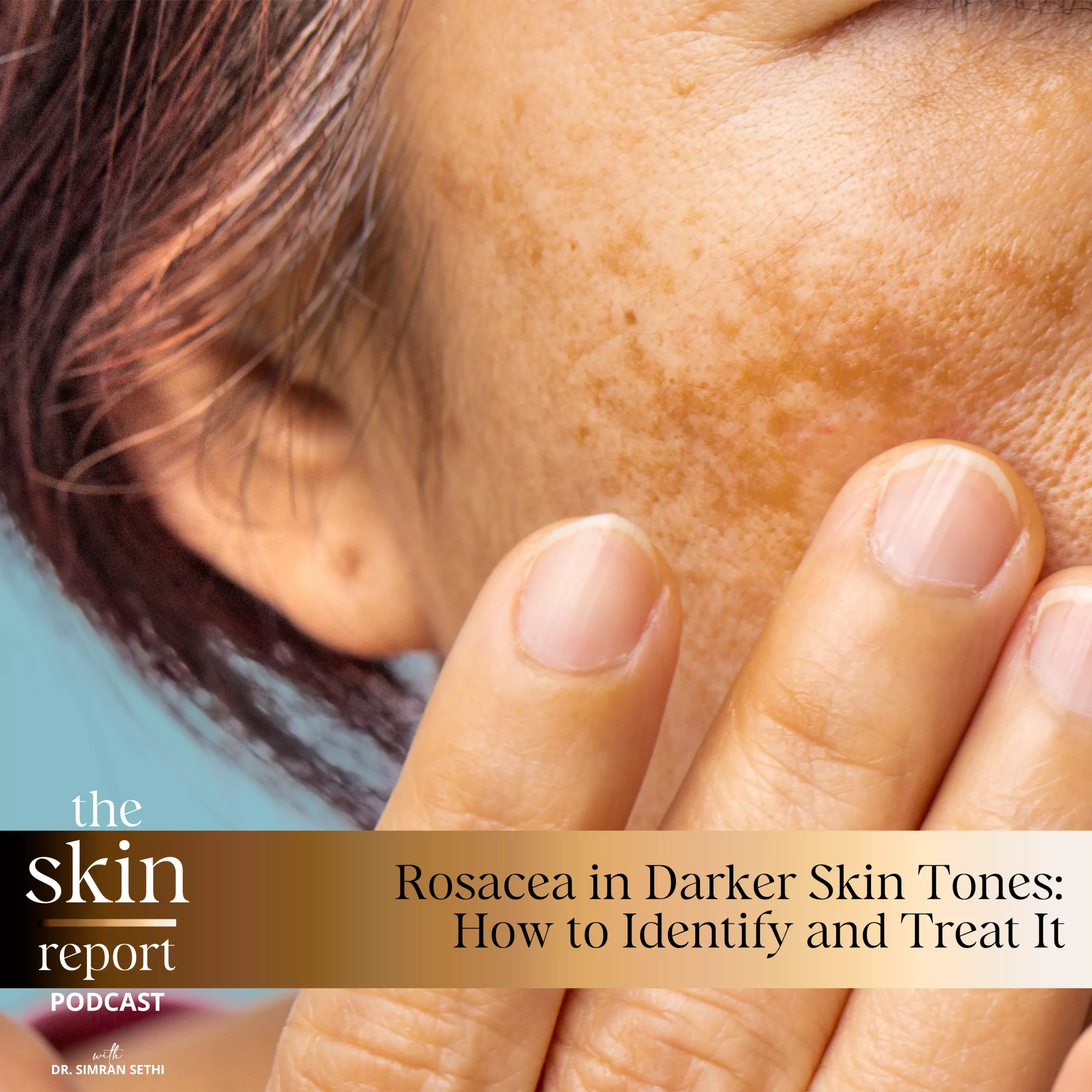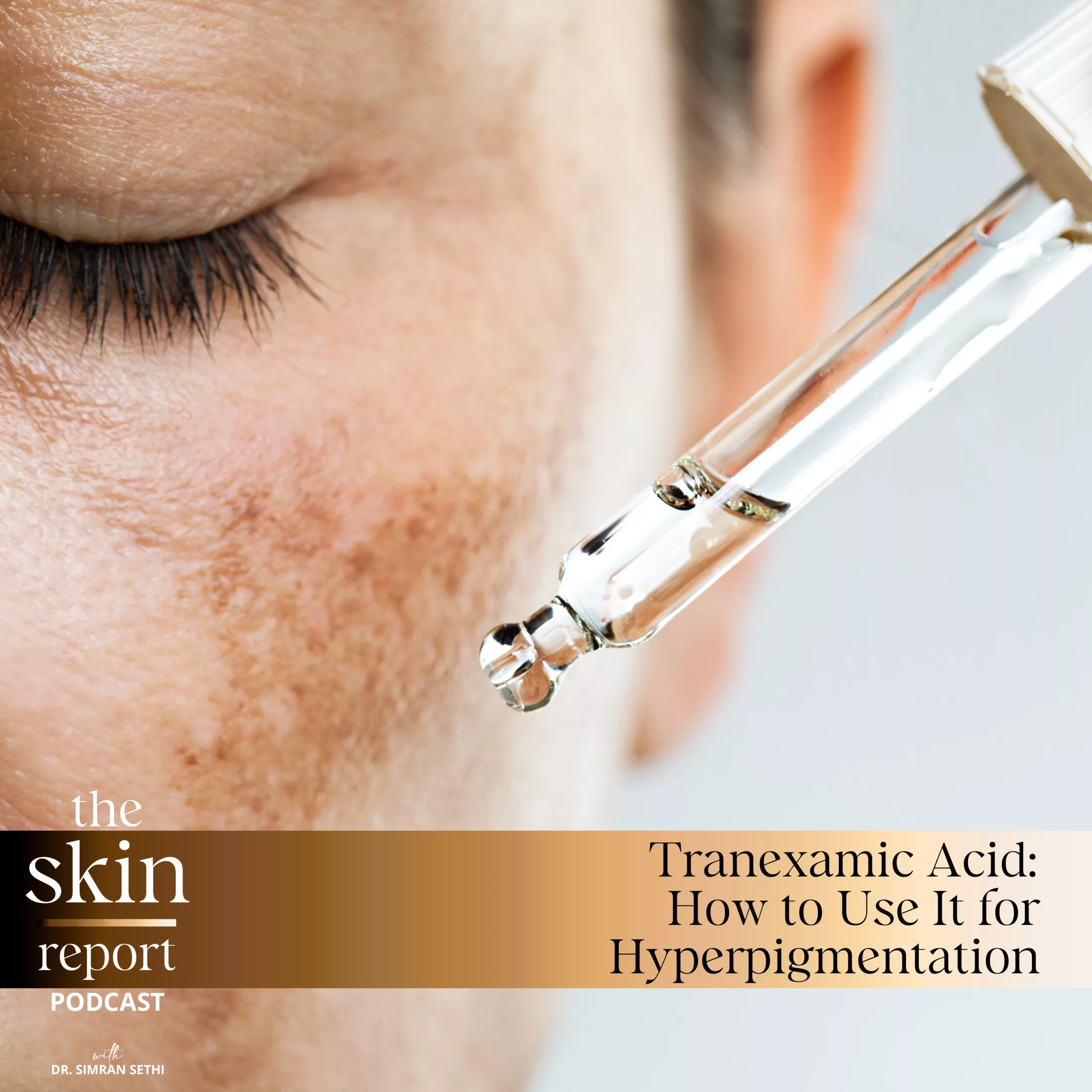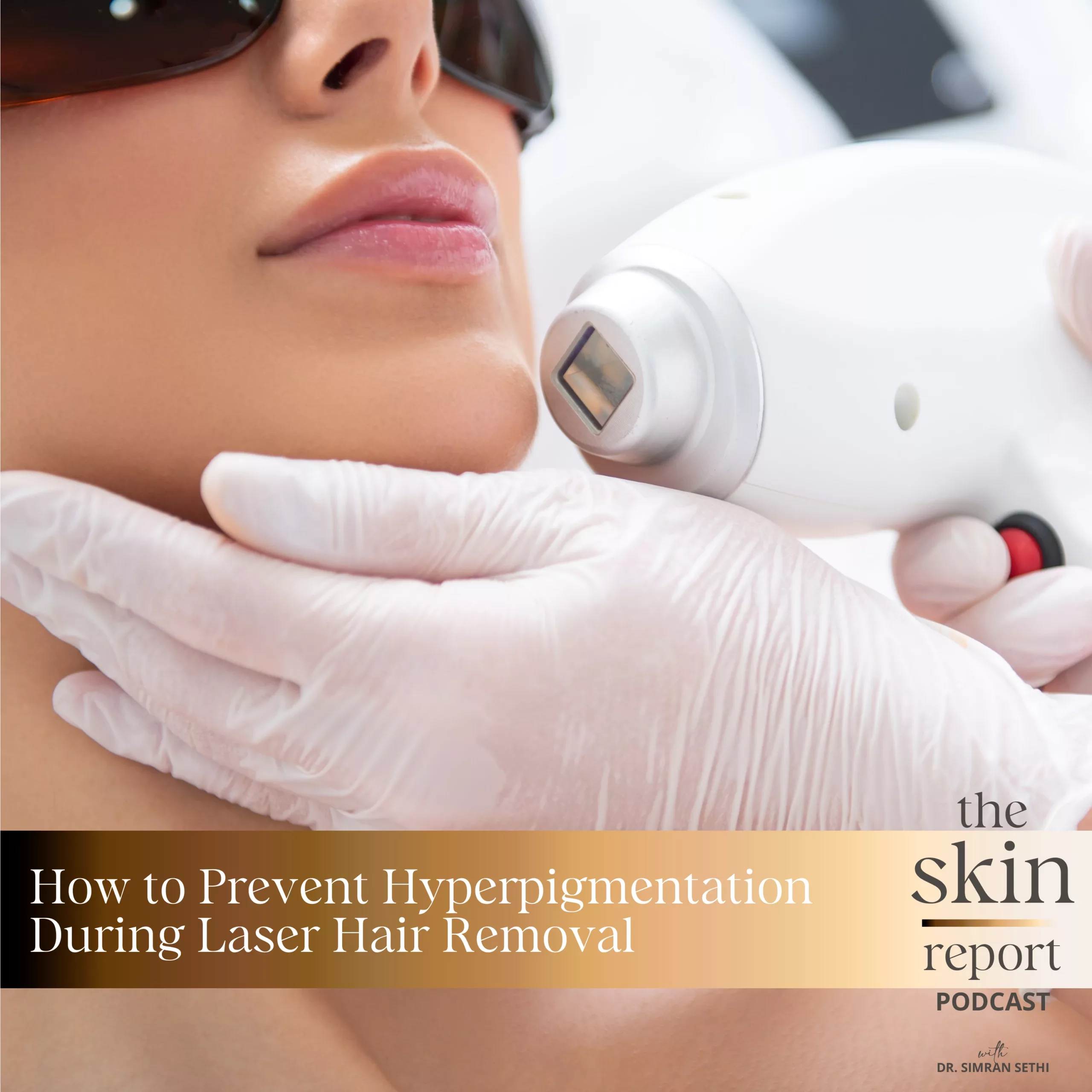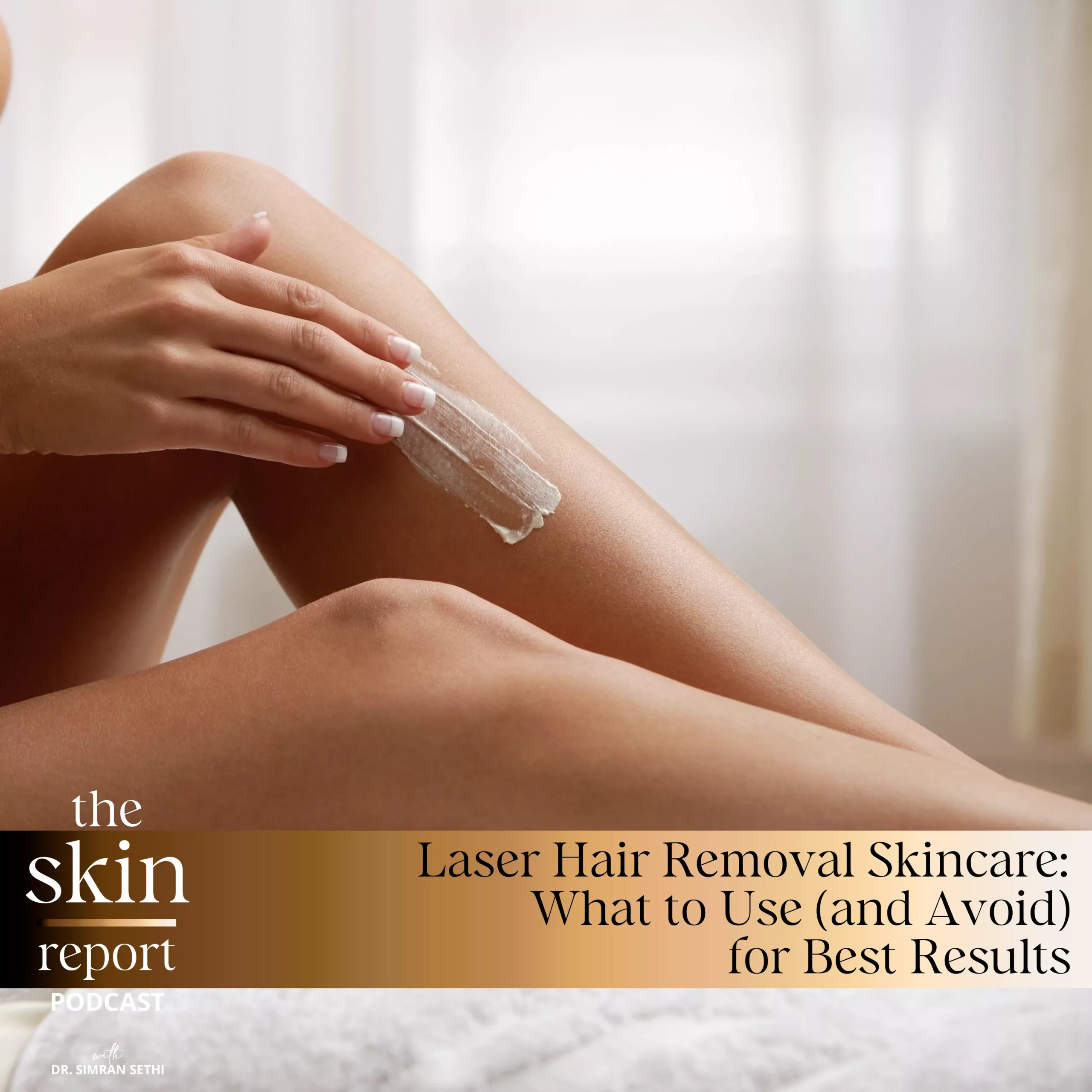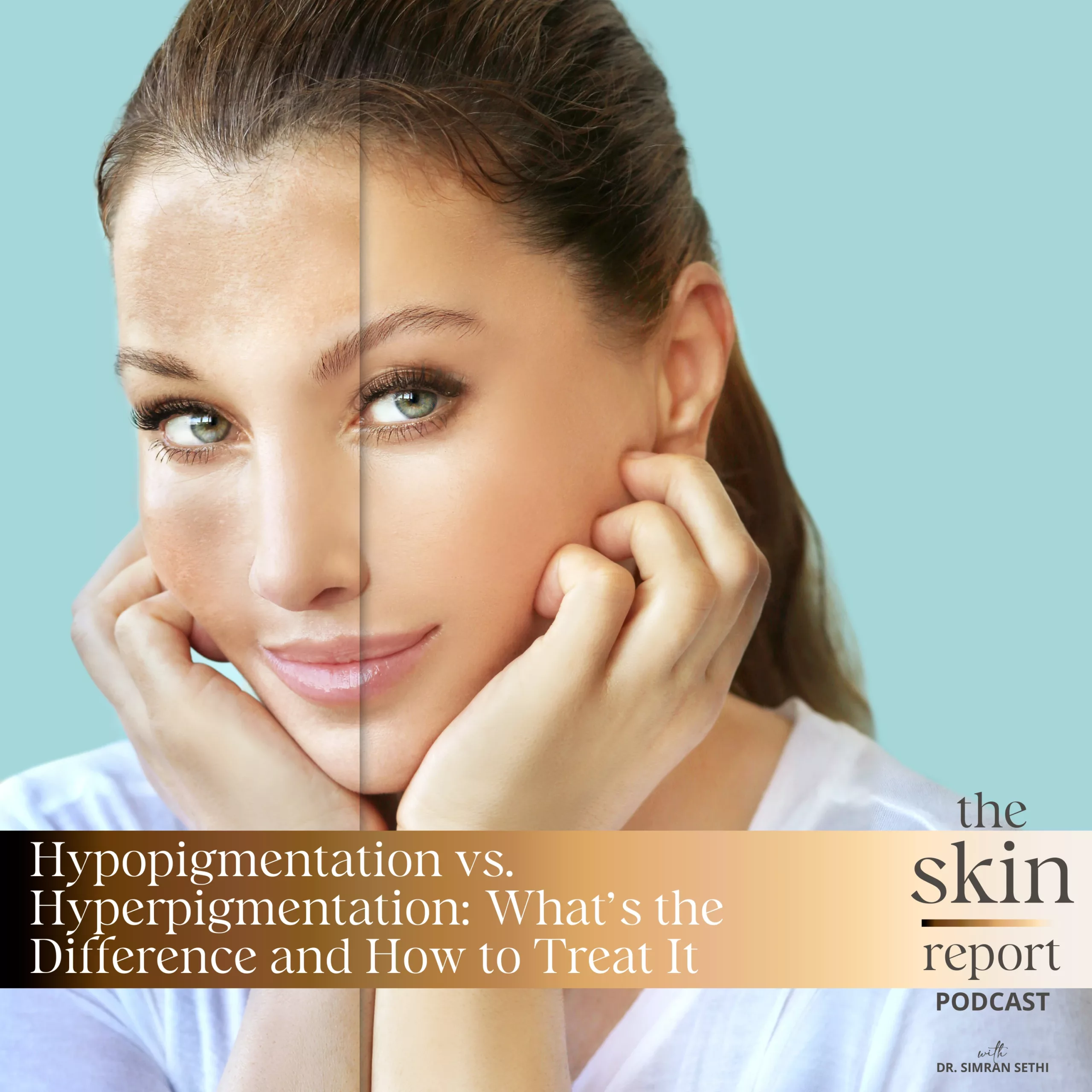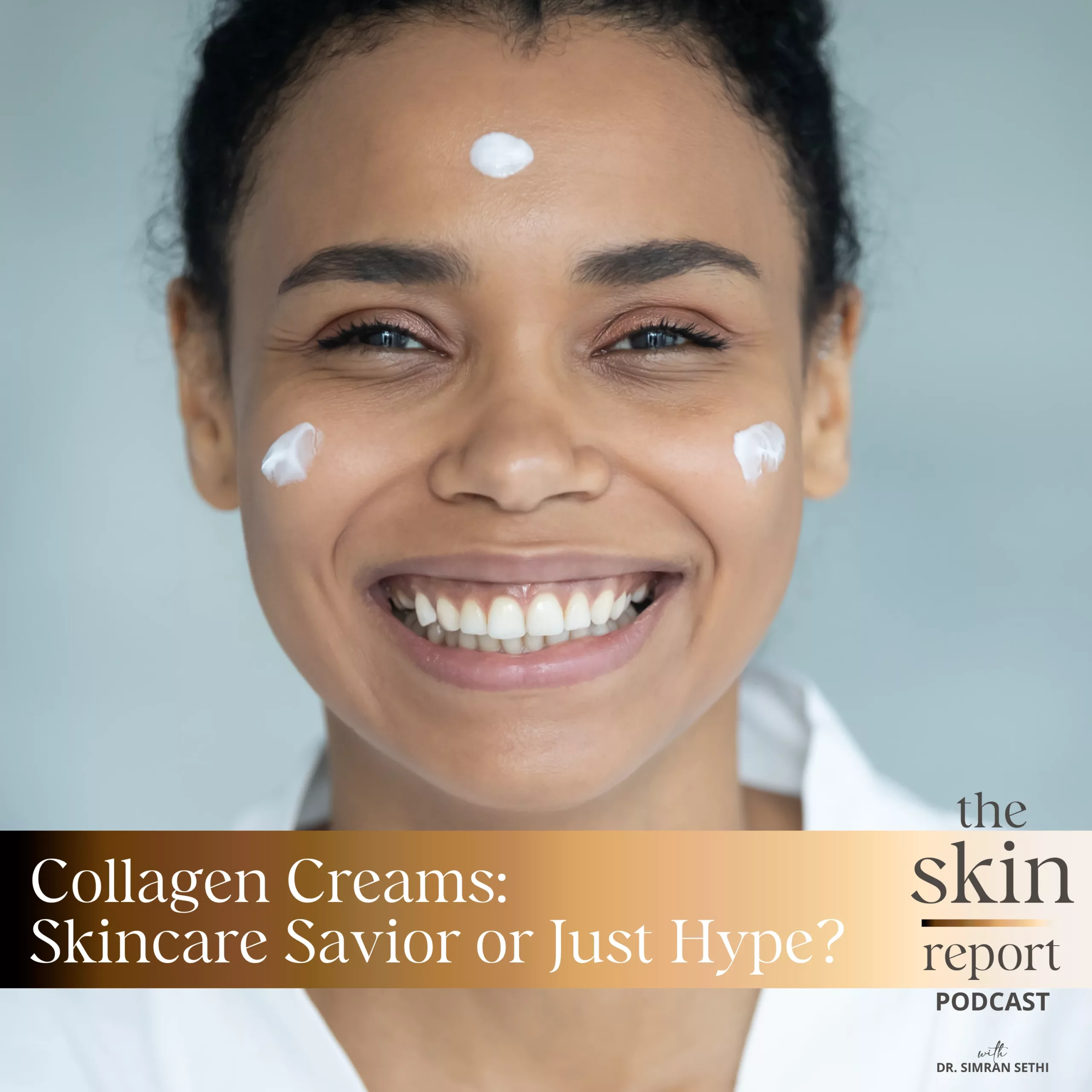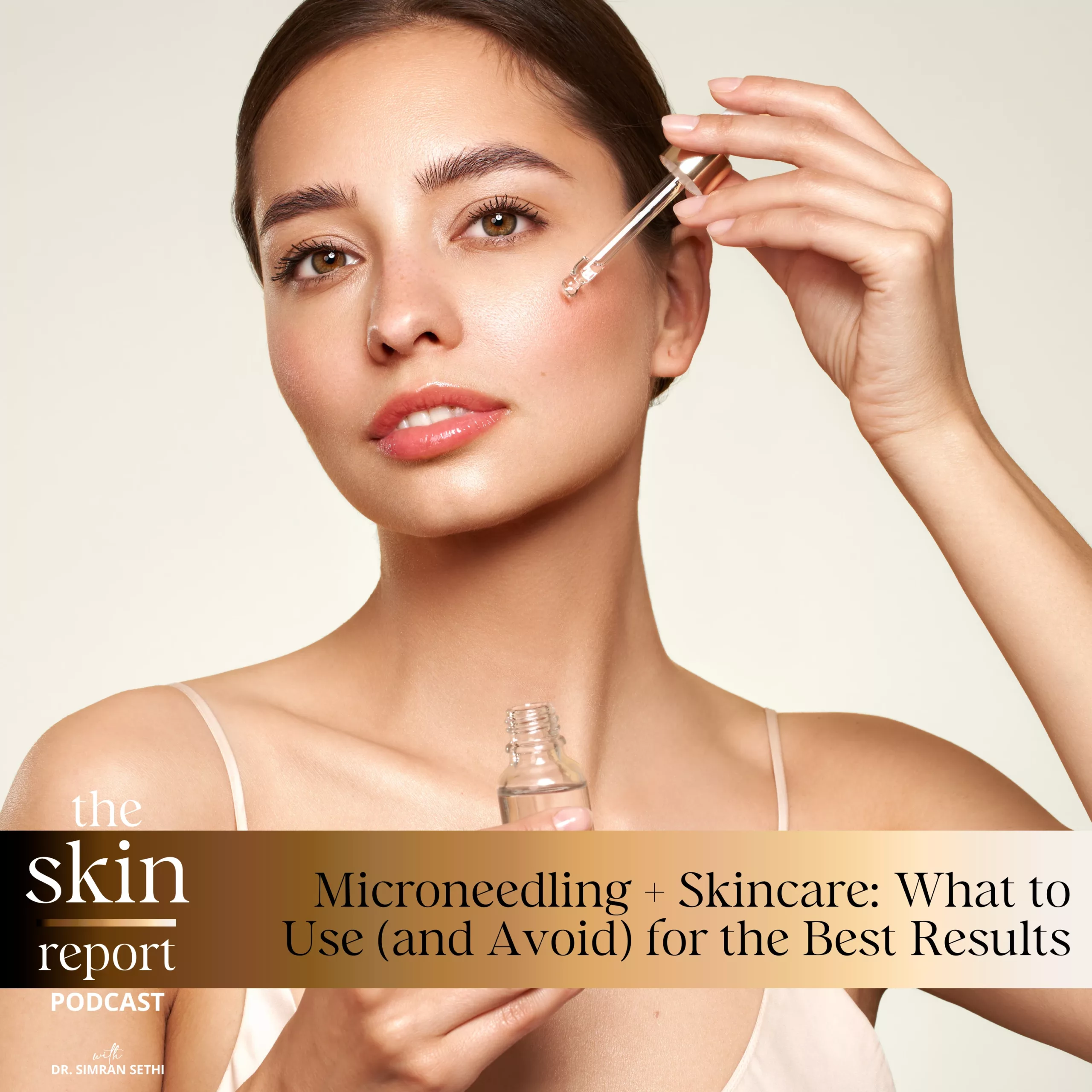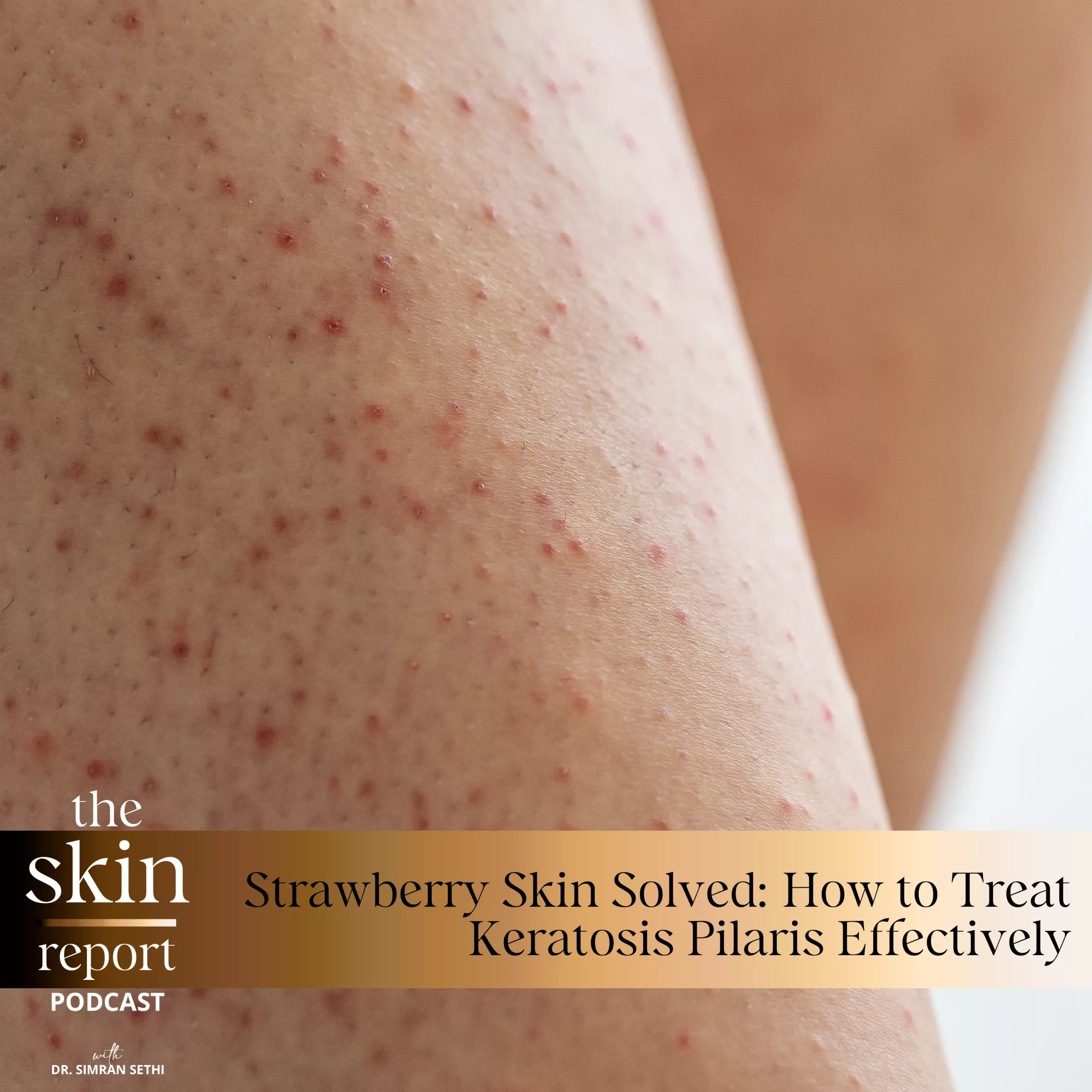What is Glass Skin and How to Achieve It
If you’ve seen the “Glass Skin” trend online, you know the level of perfection necessary to achieve this trending look. Photos on the internet show skin that looks textureless, monochromatic, dewy, and hydrated. But is it possible to achieve skin that looks that perfect, and if so, how?
The Skin Report is a podcast created to educate listeners on methods to improve skin health for people of all ethnicities and ages. In this episode, host Dr. Sethi shatters the mystery surrounding the glass skin trend! Glass skin is a Korean beauty trend that has taken the internet by storm over the last couple of years. This episode covers its origin, key characteristics, and whether it can be achieved. Dr. Sethi also breaks apart some of the lies that are often shared online about “perfect” skin so that listeners can have realistic expectations regarding their skincare. Finally, she describes how a routine with the right balance of moisture and exfoliants can help anyone enhance their skin’s appearance.
As the founder of RenewMD Beauty Medical Spas and a woman of color, Dr. Sethi is dedicated to spreading science-backed skincare information on The Skin Report. Check out this episode to learn more about glass skin!
Follow and DM a question for Dr. Sethi to answer on The Skin Report Podcast:
Renew Beauty Instagram:
https://www.instagram.com/renewmd_beauty/
RenewMD Beauty Medical Spas, California:
https://renewmdwellness.com/
Dr. Sethi on TikTok:
@SkinByDr.Sethi
Skin Cycling Duo Special Offer 20% off Promo Code:
SKINREPORT20
Skin By Dr. Sethi – Clarifying Glycolic Gel:
https://skinbydrsethi.com/collections/cleanser/products/clarifying-glycolic-gel-acne
Skin By Dr. Sethi – Vita E and F Hydrate Serum:
https://skinbydrsethi.com/collections/dry-skin/products/vita-e-and-f-hydrate-serum
Skin By Dr. Sethi – Hyaluronic Plump and Protect:
https://skinbydrsethi.com/collections/serums/products/hyaluronic-plump-protect
This transcript was exported on November 6, 2023 -view latest version here.
Skincare can sometimes feel overwhelming. Whether it’s finding the right products, ingredients, or treatments, there’s a lot out there, but not always for people of African, Hispanic, Middle Eastern and Eastern South Asian descent. That’s why I set out to educate myself and others so that we can all feel beautiful in our skin. Hello and welcome back to the Skin Report. I’m Dr. Simran Sethi, an internal medicine doctor, mom of three and CEO and founder of Renew MD Medical Spas and Skin by Dr. Sethi.
On this episode, we’re going to break apart the mystery surrounding the glass skin trend. While internet beauty trends come and go, one that has been maintaining relevancy over the past few years has been glass skin. This term stemmed from Korean beauty and is now a hashtag used worldwide, primarily amongst the beauty and skincare communities. But when you try to decipher what glass skin exactly is, things can get a bit blurry. Photos tagged as hashtag glass skin online can show anything from naturally beautiful complexions with barely noticeable skin insults to edited photos of textureless monochromatic skin tones. As a skincare professional and internal medicine doctor, I want to be transparent in discussing glass skin as it is often confused with perfect skin, that can’t possibly exist. Which begs the question, is glass skin even achievable for the average person? So, stay tuned because coming up on this episode, I’ll be shattering the illusion of perfect skin while also giving listeners the low down on what they can really expect from a glass skin routine.
The glass skin trend originated from South Korean beauty and the terms used to describe skin that is radiant, smooth, even toned and hydrated. This skin is so exceptionally pristine that it gleams, appearing almost translucent like a sheet of glass, which is how the trend got its name. Now that we know what glass skin is and how it originated, we can move on to skincare, right? Well, not quite yet. I want to take a quick moment to remind anyone listening that in order to practice healthy skincare, we should always be realistic about our expectations. This is because by maintaining realistic expectations about skincare and adjusting our routines appropriately based on your skin’s reactions, we can maintain its health and beauty for the long run. With that said, it’s important to know what glass skin is, but it’s also important to know what glass skin isn’t. On the internet today, people are bombarded with images of skin that are face tuned, photoshopped and edited.
And I get it, removing an unsightly pimple from your picture can improve your confidence when looking back on these memories. I do, however, take issue with influencers, companies or other large accounts sharing photos of impossibly perfect skin and claiming that it’s natural. And with the rise of AI image generation, forged images like these are not going to go away anytime soon. Posts tagged as glass skin online often show photos of skin with no visible pores, no wrinkles, and no variation in shade or texture, but in reality, it’s time to shatter the illusion of perfectly pore-less skin. Pores serve an important biological role, allowing us to regulate our body temperature and providing natural moisture to the skin surface. While skin is an organ that protects our bodies from external harm, and in protecting us, it is completely natural for skin to experience insults, discoloration and texture. So although skincare methods can improve your skin’s appearance, nobody should compare their skin’s appearance to overly edited images. Remember, your skin shouldn’t look exactly like those photos online because natural skin doesn’t.
But coming up next, I’ll explain how you can apply gentle and realistic methods to nurture your skin, which can significantly enhance its appearance and more importantly, its health. Real glass skin is really healthy and hydrated skin, which can most certainly be achieved no matter what your skin tone and skin type is. Skincare and specifically the skin barrier plays an important role in achieving glass like healthy skin. The types of products, the order in which you apply them and the consistency with which you apply them all affect your success at achieving glass like skin. Glass skin is characterized by a bright, even toned complexion. It shows minimal texture with practically no visible blemishes or pores, and finally, it appears extremely hydrated. Let’s consider each of the significant aspects of the glass skin trend and what you can do to achieve them.
First, for brighter and even toned skin, you need to start with an exfoliant that unglues and removes all the dirt and debris on the skin surface and in the pores. We are constantly making new skin in our skin’s deeper layer, the dermis, and as we do so, old dead skin cells push the topmost layer of our skin. We naturally are constantly sloughing off those dead skin cells, but not fast enough. Dead skin sitting on our skin surface does two things. It makes the skin tone look dull and uneven and it clogs up pores and makes them bigger. To effectively remove the debris of dead skin, dirt and pollution from the skin, use an exfoliant daily or at least every other day if you have dry, sensitive or mature skin. Exfoliation can be tricky and scary if you have sensitive skin or a darker skin tone and have noticed burning or worsening pigmentation when you exfoliated in the past.
I agree, there is a lot to safe exfoliation and I’m going to summarize it here, but I would highly recommend you listen to my previous full episode on how to exfoliate effectively, safely, and for all skin tones in season one, episode 14. Back to exfoliation. Consider using an alpha hydroxy acid or beta hydroxy acid that is also balanced with anti-inflammatory or soothing ingredients. In my skincare line, the Clarifying Glycolic Gel is one of the strongest glycolic acids, which is an alpha hydroxy acid, available over the counter, but it is completely balanced by soothing botanicals, and while it is a very strong exfoliator, you don’t experience any sensitivity, burning, or breakage of the skin barrier. Again, strong exfoliation is a very important step in achieving healthy glass skin, but do not do this at the expense of breaking your skin barrier. If you are exfoliating and you feel that your skin feels drier, more sensitive or is burning, it might be time to reduce the frequency of your exfoliation or consider a different product.
Next, after you’ve removed all the dirt and debris from your skin’s surface, it’s time to hydrate it. Hydration should be considered a two-step process. The first step is obviously to hydrate the skin with a moisturizer, but the second, often forgotten, step is to seal this moisture with a moisture blocking barrier. I’m going to discuss each of the moisturizing steps separately. To moisturize for glass skin, you need to incorporate lipids into your moisturizing step. Lipids are an important part of the skin barrier because they make skin more fluid instead of brittle and prone to micro tears. Lipids are large class of molecules that include oils, glycolipids, and phospholipids. When it comes to choosing which lipids you should apply on your skin, always choose products that are made of glyco or phospholipids. These mimic the natural fats in our skin barrier. Lipids found in oils like coconut oil or Vaseline are far too large from a molecular perspective to sit in the skin barrier and instead, end up just sitting on top of the skin and trap dirt into the follicles, often leading to clogged pores and breakouts.
Again, to give you an example from my skincare line, the Vita E and F Hydrate serum is a combination of vitamin E and glyco and phospholipids to provide deep hydration and will just sink into the skin without leaving a greasy residue that clogs pores. At this point, if you have oily skin, you’re probably wondering if adding lipids into your regimen will worsen your oil production. For oily skin, I still recommend a moisturizer, but one with hydrating ingredients like niacinamide as this skin type naturally produces lipids. However, if you have oily skin, you are constantly losing oil and water to the air, which means that incorporating a moisturizer in your glass skin regimen is still important.
The next step in hydration is moisture sealing or blocking. Almost every patient I speak to has heard of hyaluronic acid, but almost all of them are all applying it ineffectively. Let me tell you why. Our body and skin is warmer than the environment around us, which means that our skin is constantly losing moisture to the air. This explains why people with dry or normal skin feel that their skin is dry again only hours after applying moisturizer, and people with oily skin have more grease on their face just a few hours after cleansing their skin. In dry, normal skin, the skin is losing moisture, a process called trance epidermal water loss, to the air, and in oily skin, it’s undergoing the same process, but in this skin type, water loss triggers more oil production. I’m explaining this in detail because it’s a very important concept to understand. Every skin type and tone needs a moisture sealing product and that is achieved with hyaluronic acid.
Hyaluronic acid binds to a thousand times its weight in water and seals moisture into your skin, but it is most effective when applied on top of your moisturizer, not below it or mixed in with it. This also means that if your moisturizer has hyaluronic acid in it, you still need to apply another layer of hyaluronic acid on top of that moisturizer. In my skincare line, our Hyaluronic Plump and Protect gives you a double dose of moisture sealing with hyaluronic acid and snow mushroom extract, which is 500 times even more powerful in moisture sealing than hyaluronic acid. This serum is part of every skincare routine in my line because no matter what your skin type is, moisture sealing is an essential to preventing trans epidermal water loss and the skin barrier, and for the purpose of today’s discussion, it’s an important step in achieving glass like skin.
Finally, I want to remind you that beautiful skin like this requires consistency and maintenance. Part of this includes avoiding things that could cause or worsen the concerns we’re working to resolve. So here is where I preach, once more, the importance of wearing sunscreen. UV rays can cause pigmentation and enhance skin insults, which is why you should always remember to wear a strong physical SPF each day. I could go on and on about my recommendations for each of these skin concerns at length, but fortunately, I have episodes that provide more in-depth details on the best science backed practices for addressing them. I’ll include links to them in the show notes and I highly suggest you check them out.
To close out this episode, I want to go over some important reminders and start by returning once more to the ultimate question, is glass skin attainable? But my answer isn’t as easy as yes or no. If you really understand that glass skin is super hydrated, shiny skin with minimal pores and texture, then it is achievable. If you think that glass skin is skin without any pores or blemishes, the skin is completely evenly pigmented, then you should remind yourself that this is only achievable with editing of images and is definitely not real. So the answer is yes, glass skin is achievable for all skin types and tones as long as you are consistent, using the right products and in the right order. This is also a good time to point out some skincare practices that will not give you glass skin and instead do the opposite. Applying Vaseline, also known as skin slugging, on your skin for a hydrated look is only going to clog your pores. Vaseline or petroleum jelly is a large molecule that sits on your skin surface and just attracts dirt and pollution that will clog your pores and create breakouts.
If you stick to small molecular weight lipids, you will properly nourish your skin barrier and not experience more blemishes. Glass skin is an aspirational skincare trend and should be viewed as such. By this, I mean that it is fine for these photos to motivate you to take better care of your skin, as long as you maintain realistic expectations surrounding real skin. With proper skincare, you can make significant progress towards skin that is brighter, more even and dewy-er. But remember, real photos of skin should include things like pores and natural imperfections because these are parts of real life and real beauty. Thanks, as always, for listening, and until next time. Love your skin, love yourself, and celebrate your beauty.
If you’d like to learn more about science-backed skincare or medical aesthetic treatments, please subscribe to and turn on notifications for the Skin Report so you always know when a new episode is up. We have a newsletter that you can sign up for on skinbydrsethi.com so that you can stay up to date on all our latest products and more. Additionally, if you have a skincare question or want to make an episode topic recommendation, please message me at theskinreportbydrsethi.com, which is linked in my show notes, and I’ll be sure to answer your questions in an episode soon.
Transcript by Rev.com


